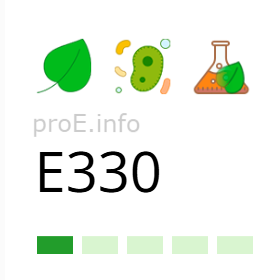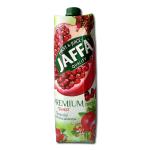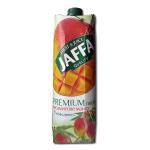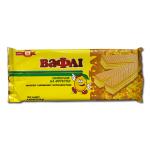
Other names for the additive (synonyms)
General Information
Citric acid (food additive E330) belongs to organic acids and is a natural preservative. It is a weak triprotic acid, appearing as a crystalline white substance. E330 is highly soluble in water and ethyl alcohol, and slightly soluble in diethyl ether.
The molecular formula of additive E330 (citric acid) is C6H8O7.
Citric acid is widely found in nature; it is present in all citrus fruits, berries, tobacco plant stems, and pine needles. Particularly high concentrations are found in unripe lemons and Chinese magnolia vine (Schisandra chinensis).
Citric acid was first isolated by Swedish chemist-pharmacist Carl Wilhelm Scheele from lemon juice in 1784. Later, industrial production involved extracting it from lemon juice and mahorka biomass. Today, citric acid is mostly produced by biosynthesis using the mold fungus Aspergillus niger on sugar and sugar-containing materials. It can also be obtained from plant products or by chemical synthesis.
Esters and salts of citric acid are known as citrates. In the food industry, they are used as additives:
Effects on the Body
Benefits of Additive E330
Citric acid participates in metabolic processes that provide two-thirds of the body’s required energy. This series of reactions is called the – tricarboxylic acid cycle or Krebs cycle. Thanks to this discovery, Hans Adolf Krebs was awarded the Nobel Prize in Physiology or Medicine in 1953.
Risks of Additive E330
When working with citric acid, it is important to consider that concentrated solutions can harm the skin and eyes, and excessive consumption may damage tooth enamel. Inhaling dry citric acid may irritate the respiratory tract, and consuming a large amount at once may provoke bloody vomiting, coughing, and gastric mucosa irritation.
Uses
Citric acid is widely used in the food industry, detergent production, as well as in cosmetology and pharmacology.
Citric acid and its salts, such as potassium citrate, sodium citrate, and calcium citrate, are food additives used for acidity regulation, flavor enhancement, and as preservatives.
Additive E330 is especially widely used in the production of beverages, confectionery, and bakery products. In the latter, citric acid often acts as a component of leavening agents or dough "improvers". In combination with alkalis, such as baking soda (additive E500), E330 engages in a vigorous reaction releasing carbon dioxide, which makes the dough fluffy and aerated.
Legal Status
All known food safety organizations classify additive E330 as safe for human health.



